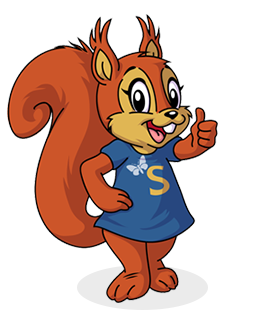Good morning everyone. Hope you are all well.
How did you get on with the daily tasks yesterday?
Here are the answers to yesterday’s mental maths questions. I have got one deliberately wrong. Can you spot which one it is?
53 x 10 = 530 67 x 10 = 670 43 x 10= 430 54 x 10 = 540 24 x 10 = 240
343 x 10 = 3,430 587 x 10 = 5,870 619 x 10 =6,109 213 x 10 =2,130 765 x 10 = 7,650
I know that you’ll all say that when you multiply by 10 you ‘just add a zero’ – but did you understand from the video that when you multiply by 10 every digit moves 1 place to the left (because it’s getting 10 times bigger) which leaves a zero in the units column as a ‘place holder’?
Today’s tasks are as follows …..
Maths No Problem
Chapter 8 Decimals: Lesson 2 Writing Tenths
Textbook pages 5,6,7 Workbook pages 3 & 4
Today’s lesson requires a Place Value Chart and some counters. You can just draw a chart on a piece of paper (see Let’s Learn 1 for an example). The lesson focuses on the ‘value’ of the counter (digit) depending on its ‘place’ (position) on the chart.
Lesson Notes: To begin this lesson, display a place-value chart (ones and tenths) and show pupils you have 5 discs. Tell them that each disc can represent either 1 or 0.1. Tell them you are thinking of a number that has ones and tenths and can be formed using the 5 discs. Put 3 discs in the ones column and 2 in the tenths column. Ask pupils what the number is. Tell them that 3 discs in the ones column means there are 3 ones and 2 discs in the tenths column means there are 2 tenths. Write these down as you explain. Then continue to write and explain that 3 ones + 2 tenths is equal to 3 + 0.2, which is equal to 3.2. We read this as 3 and 2 tenths.
Work through two more examples with pupils – 2 and 3 tenths (Let’s Learn 2) and 1 and 4 tenths (Let’s Learn 3). Ask them if any other numbers can be made. Allow a few pupils to try making a different number using the 5 discs. There are 3 other possibilities: 4.1, 0.5 and 5.0. Conclude by stating that we can make 6 numbers using 5 discs.
Ask pupils to work in pairs and provide each pair with 4 discs and a place-value chart. Tell pupils that each disc can be 1 or 0.1. Ask them to take turns to think of a number made up of ones and tenths that can be made using the 4 discs, then their partner writes and reads the number. Ask them to make as many numbers as possible using the 4 discs. They should be able to make 5 numbers: 1.3, 2.2, 3.1, 0.4 and 4.0.
Mental Maths / Arithmetic
Multiplying by 100
see tutorial https://www.youtube.com/watch?v=7Y0zSnhiShc
51 x 100 = 62 x 100 = 49 x 100= ? x 100 = 9900 ? x 100 = 8700
231 x 100 = 53 x 100 = 86 x 100= ? x 100 = 12,300 ? x 100 = 42,500
Writing Task
A grammar lesson today about the difference between plural and possessive ‘s.’ Don’t panic. Watch the video at this link: https://central.espresso.co.uk/espresso/primary_uk/subject/module/video/item361698/grade2/module305320/collection361818/section361774/index.html
…. then do the online quiz, quiz plus and activity. If you have time, come up with some sentences where you are using a plurals, and singular & plural possession.
The log in details are below … plug them in and that should take you to the video
Good luck
Mr Price
If you are logged onto Espresso follow the following route to get to the video:
Home page – Key Stage 2- English – Grammar and punctuation – word – the difference between plural and possessive ‘s’
Espresso: www.discoveryeducation.co.uk
Username: student10987
Password: southill123
Please don’t forget to read today. ‘The more you read, the more you know. The more you know, the more places you will go.’ You should be able to access the book quizzes and don’t forget to go on Lexia (if you have a log in) for 15 minutes each day. Well done everyone.




